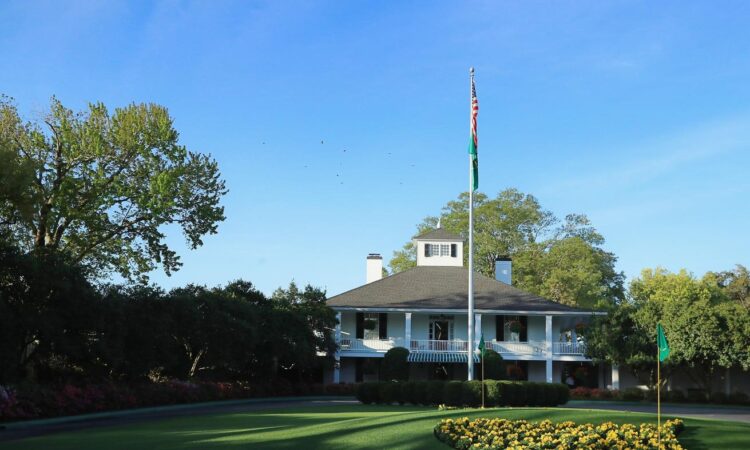
Augusta National Golf Club is investing in a renovation of a local municipal course, enlisting … [+]
As the annual host of golf’s Masters Tournament, Augusta National Golf Club has dramatically shaped — and re-shaped — the city of Augusta, with a total economic impact estimated around $120 million annually.
Thousands of visitors descend on Augusta and the surrounding area each April for the first major championship of the year, flying into Atlanta or Columbia, South Carolina, and then renting cars, snatching up available rooms in local hotels, inns and homes, eating at local restaurants and spending money in local stores.
While as private as a golf club can get, Augusta National has actively sought to boost the game globally from a more grassroots level, especially in recent years. The club has also been active in the Augusta community is now seeking to elevate golf locally, announcing plans for a significant renovation of the nearby Augusta Municipal Golf Course that’s located just five miles from the front gates of the home of the Masters.
Two well-known names in golf architecture circles — Tom Fazio and Beau Welling — will take on the renovation of the 96-year-old local course affectionately known as “The Patch” after having worked on Augusta National itself in recent years.
The project will start in January 2025, when the club and Augusta Technical College (which has a strong golf management program) begin a lease with the City of Augusta to run the public course. After the work begins next year, the goal is to reopen in April of 2026, around the time the Masters makes its annual return.
“It has almost unlimited potential,” ANGC and Masters Tournament Chairman Fred Ridley said of The Patch, which is adjacent to Augusta’s private airport, Daniel Field. “It has a lot of history. We’re going to honor that history.
“The main thing we’re going to try to do is to really provide a great golf course and practice area and possibly a short course,” added Ridley. “It’s really going to be a hub for junior and high school golf.”
The Augusta Municipal Golf Course is adjacent to the private airport in Augusta, Georgia, and about … [+]
A year ago, Augusta National announced a collaboration with the City, Augusta Tech, and the First Tee of Augusta to create affordable pathways to discover the game of golf. Over the past year, the club has held community input sessions to get feedback on the most significant improvements necessary at the facility. While a new clubhouse isn’t in the plans, Ridley said it will be freshened up as part of the effort.
The renovation cost hasn’t been disclosed, but the dedication to preserving and improving public golf in Augusta is the latest prominent effort within the U.S. municipal golf space. The highest-profile example is in Philadelphia, where at least $100 million is being invested in the revitalization of historic Cobbs Creek Golf Course and the construction of an eductation center for Tiger Woods’ TGR Foundation.
In Washington D.C., the National Links Trust is seeking to revive the three muni golf facilities in and around the nation’s capital. San Francisco completely overhauled its 9-hole Par 3 course in Golden Gate State Park, while the city of Sarasota, Florida, recently reopened its Donald Ross-designed municipal course at Bobby Jones Golf Club following a major restoration project.
The Bobby Jones Golf Club in Sarasota reopened its 45-hole facility in December 2023 after an … [+]
Across the country, there are numerous other examples.
While the challenges faced by some governmentally-owned municipal golf courses have been well-documented, especially older facilities with aging infrastructure in densely populated urban areas, the National Golf Foundation noted last month that there are currently more munis operating in the U.S. than at any time in history.
The Patch is one of almost 3,000 municipal golf courses across the country that are owned or operated by states, counties and cities to help provide golf as an affordable recreation for local residents. What’s notable is that this muni total represents just 18% of the overall U.S. golf supply, yet NGF surveys revealed that 71% of the game’s Core golfers — defined as those who play at least eight rounds a year — trace some of their earliest golf experiences to a municipal golf facility.
Municipal golf courses have long been celebrated as locations where golf is most affordable and accessible, and where aspiring golfers young and old often get their introduction to the game.
Augusta National might be the pinnacle of golf exclusivity, instantly recognizable to golf fans around the world who will never play the course itself, but the club’s investment in The Patch is a clear effort to strengthen the game’s roots and continue providing needed access in a town that’s been defined by the Masters Tournament.
“It’s really a confluence of a lot of different elements of the game that can really be a great thing for Augusta,” said Ridley.
